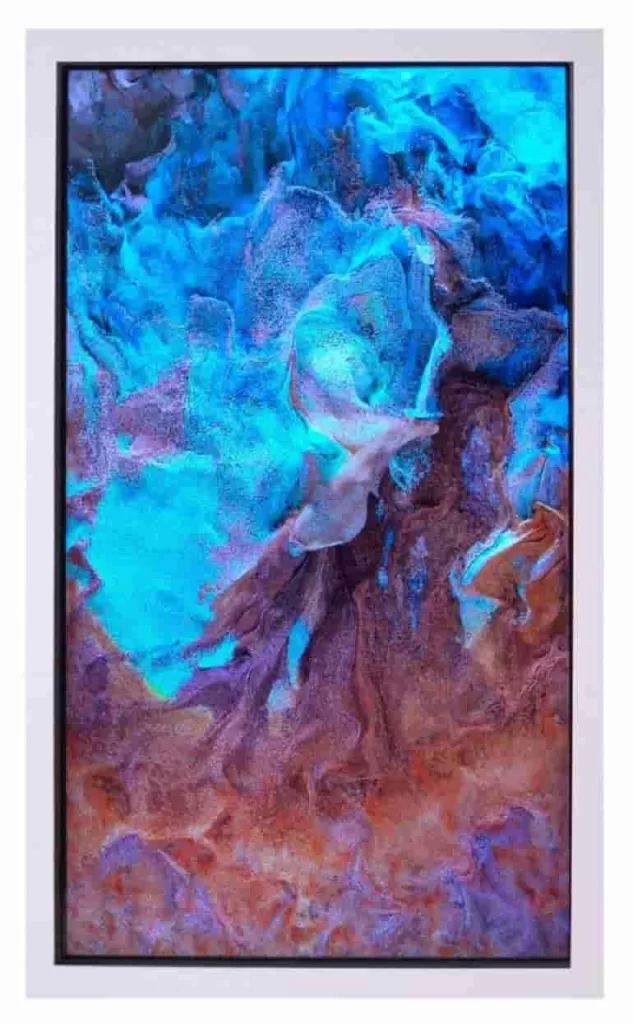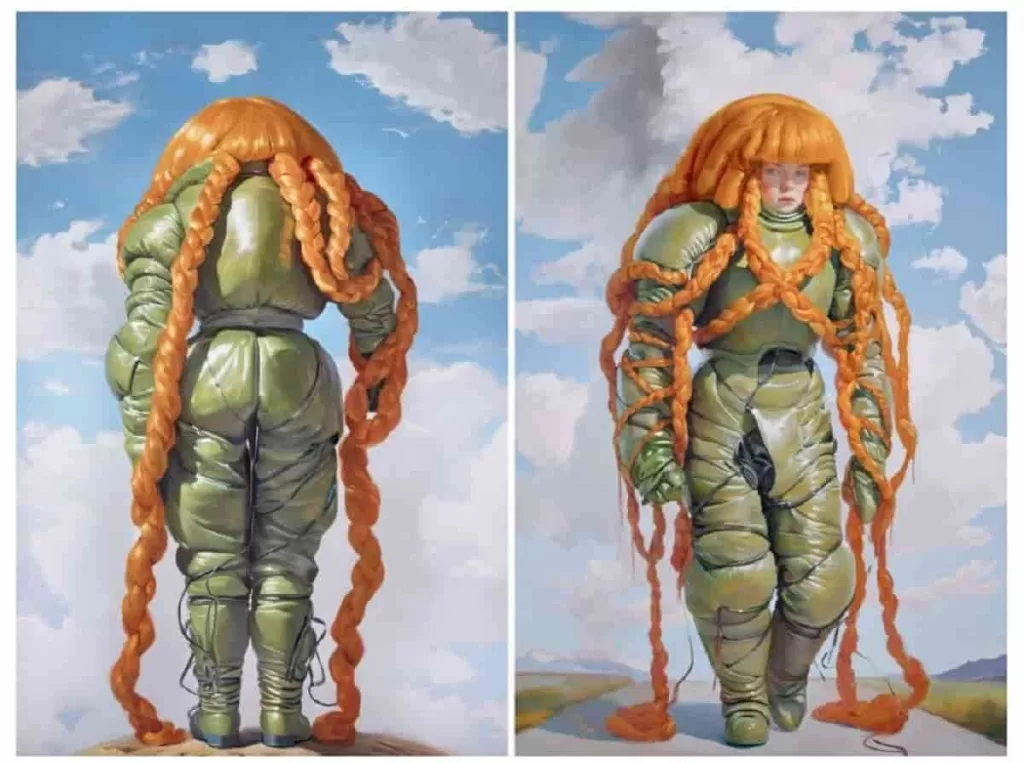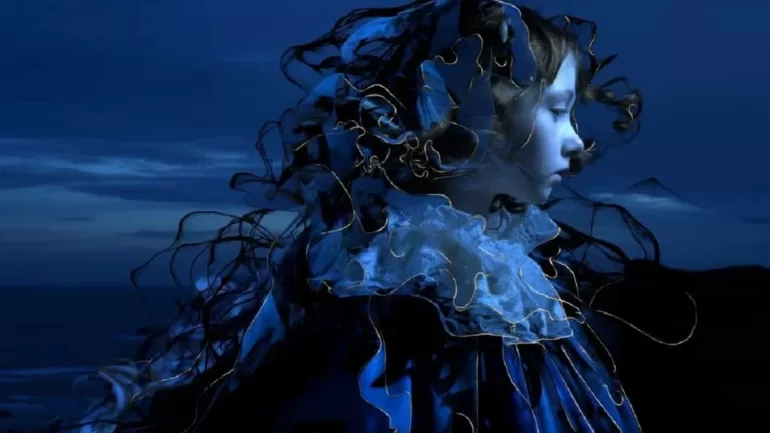ART AUCTION
Daughter (2025) by Claire Silver is one of the AI-generated art in Christie’s Augmented Intelligence auction. Sold for $44,100 (with fees). Photo: Christie’s Images Ltd. 2025
Christie’s AI art auction breaks records with $728,784 in sales, revealing how Millennials, Gen Z, and first-time buyers are redefining the AI-generated art market.
BY KAZEEM ADELEKE, ARTCENTRON
Christie’s, one of the world’s leading auction houses, recently held its first-ever auction dedicated solely to AI-generated art. The highly anticipated and controversial auction, Augmented Intelligence,took place on March 5. It exceeded all expectations, generating a remarkable $728,784—well above its $600,000 estimate. This event has not only reshaped the art world but has also introduced a fresh wave of collectors, marking a new era for digital and AI-generated artwork.
Millennials and Gen Z Lead the Charge in AI Art Collecting
A significant highlight of the auction was the demographic breakdown of the buyers. Nearly 48% of the bidders were Millennials or Gen Z. Their devotion signals a major shift in the art market to younger, tech-savvy generations. Additionally, 37% of the buyers were first-time clients at Christie’s, further illustrating the growing interest in AI art. These figures demonstrate that the appeal of AI-generated art is reaching a diverse and evolving audience. This new generation of collectors is eager to embrace this innovative form of creativity.
Top-Selling Lots from Christie’s AI Art Auction
The highest-grossing piece in the auction was Machine Hallucinations—ISS Dreams—A by the renowned artist Refik Anadol. This stunning work sold for $277,200 (with fees), far surpassing its $200,000 estimate. This sale is a testament to the increasing demand for AI art. More importantly, it indicates its ability to captivate the interest of serious collectors.

Another standout piece was Embedding Study 1 & 2 by Holly Herndon and Mat Dryhurst, part of the xhairymutantx series. This diptych fetched $94,500 (with fees), exceeding its estimate of $70,000 to $90,000. The success of these pieces highlights the growing value of AI-generated art and its place within the broader art market.

Works That Did Not Sell
However, not all the works in the auction found buyers. Six lots failed to sell. They include pieces by notable AI artists such as Robbie Barrat, Ronan Barrot, and Pindar Van Arman. These unsold works reflect the uncertainty surrounding the market for AI art. They also reflect some of the collectors hesitating to invest in this new and uncharted territory.
AI Art Controversy: Artists’ Concerns and Legal Issues
Despite the success of the auction, the event was not without controversy. Thousands of artists have expressed concerns over AI art, accusing AI models of exploiting human creativity without consent. An open letter, signed by nearly 4,000 individuals, urged Christie’s to cancel the event. Signatories alleged that AI-generated artworks rely on datasets trained using copyrighted material without proper compensation to the original creators.
The letter argued, “Your support of these models, and the people who use them, rewards and further incentivizes AI companies’ mass theft of human artists’ work.” However, Christie’s defended its decision to proceed with the auction by emphasizing the role of the featured artists in the art world. The auction house contends that the artists were well-established in their fields and used AI as a tool to enhance their creative practices rather than replace them.
Christie’s Defends the Legitimacy of AI Artists
In response to the criticism, Christie’s framed AI as a valuable tool that expands the possibilities of creativity. It emphasizes that AI art is not a replacement for human artists. Moreover, the auction house clarified that the artists in the sale had strong, existing multidisciplinary practices and recognition in leading museum collections. Christie’s stressed that the works in the auction were created to enhance the artists’ bodies of work.
Nicole Sales Giles, Vice President and Director of Digital Art Sales at Christie’s, shared her thoughts on this contencious issue. “With this project, our goal was to spotlight the brilliant creative voices pushing the boundaries of technology and art. We also hoped collectors and the wider community would recognize their influence and significance in today’s artistic landscape. The results of this sale confirmed that they did.”
The Growing Role of AI Art in the Modern Market
While the sale has sparked debate, it also signals the growing acceptance of AI-generated art in the mainstream art market. Some prominent digital artists, like Beeple, have publicly supported the auction. They viewed it as a positive step towards legitimizing AI art. Others, however, think otherwise. They argue that the sale represents the ongoing struggle between traditional human artistry and the new wave of machine-driven innovation.
Nevertheless, the impressive results of the auction suggest that AI art—despite its controversy—is carving out a permanent place in the art world. The success of Augmented Intelligence proves that AI-generated art is no longer a niche but is becoming an integral part of the broader artistic dialogue.
The Growing Market for AI-Generated Art
The sale also highlighted a significant trend in the art market: the growing interest in AI art among younger generations. According to a report by the insurance company Hiscox, which Christie’s references, nearly 37% of registered bidders for the auction were new to the auction house. In fact, almost half of the bidders were Millennials or Gen Z. These demographics are increasingly embracing technology-driven art forms. That suggests that AI-generated art may find a more receptive audience in the future.
Despite the relatively small total sales for this particular auction, there is growing optimism about the long-term potential of the AI art market. A 2023 report on generative and AI art sales showed a steady increase in auction sales. The report indicates that with greater sophistication and purpose, AI art will be a major attraction for collectors.
AI Art vs. NFTs: A New Paradigm for Digital Art
The emergence of AI art also calls attention to the evolving relationship between digital art and other technological art forms, such as NFTs (Non-Fungible Tokens). While NFTs experienced a meteoric rise and subsequent crash in 2021-2022, AI-generated art is beginning to carve out its niche. This separates AI art from the NFT boom.
Again, unlike NFTs, which focus on digital ownership and scarcity, AI art concentrates on the creative process. It emphasizes the role of technology in shaping the final work. The two forms are not mutually exclusive, and many artists are experimenting with combining AI and NFTs in their creations. However, it appears that AI-generated art has the potential to stand apart as a distinct category of digital art, with its set of challenges and opportunities.
The Future of AI Art: Copyright and Ethical Considerations
Looking ahead, the ongoing discussions about copyright, authorship, and the role of AI in the creative process will continue to shape the future of AI art. As AI becomes more capable of producing complex and compelling works of art, the lines between human creativity and machine-generated content will gradually become indistinguishable. This development raises important ethical questions about the value of art created by non-human entities. Additionally, it raises concerns about the rights of human artists whose works were used to train the AI models.
Additionally, the growing popularity of AI art among younger collectors signals a shift in the art world’s traditional power dynamics. As more artists embrace AI as a tool for creative expression, the market for AI-generated art will likely continue to expand. Potentially, this growth will lead to new forms of art consumption and ownership.
The Future of AI-Generated Art and the Art Market
Christie’s AI art auction has undoubtedly set a new benchmark for the intersection of technology and creativity. As AI continues to evolve, it is clear that the art market is embracing this technological innovation. While the debate continues, the overwhelming success of Augmented Intelligence proves that AI-generated art has found its place in the world of high-end collecting.
As the art world continues to evolve, we can expect to see more AI-generated works pushing boundaries and challenging traditional notions of creativity. The future of art is digital, and AI will play a crucial role in shaping its next chapter.
